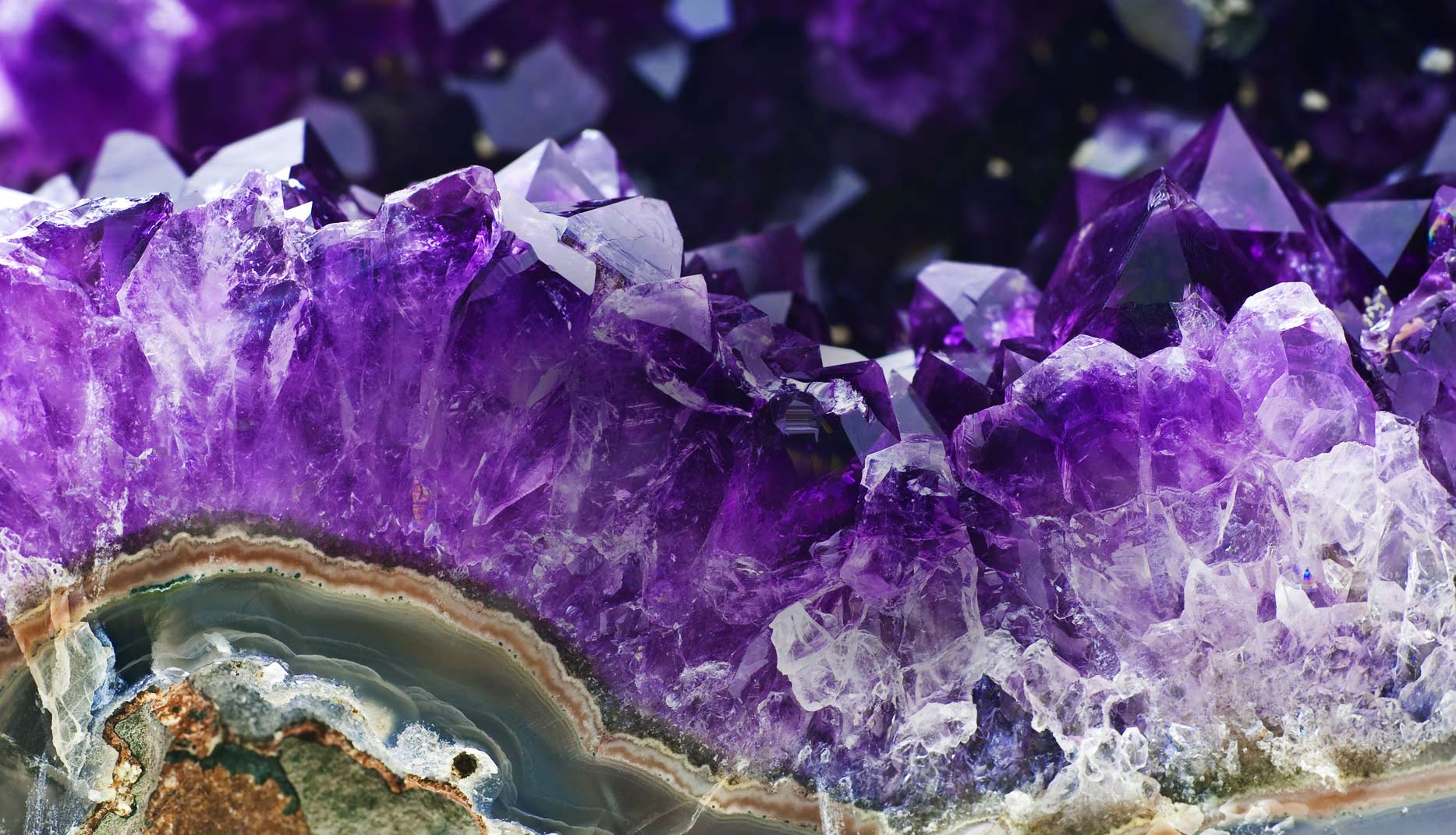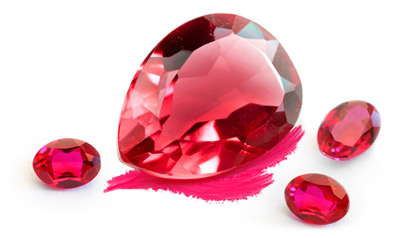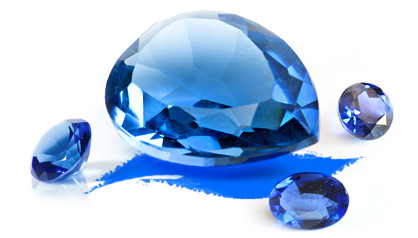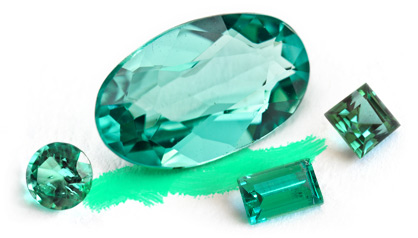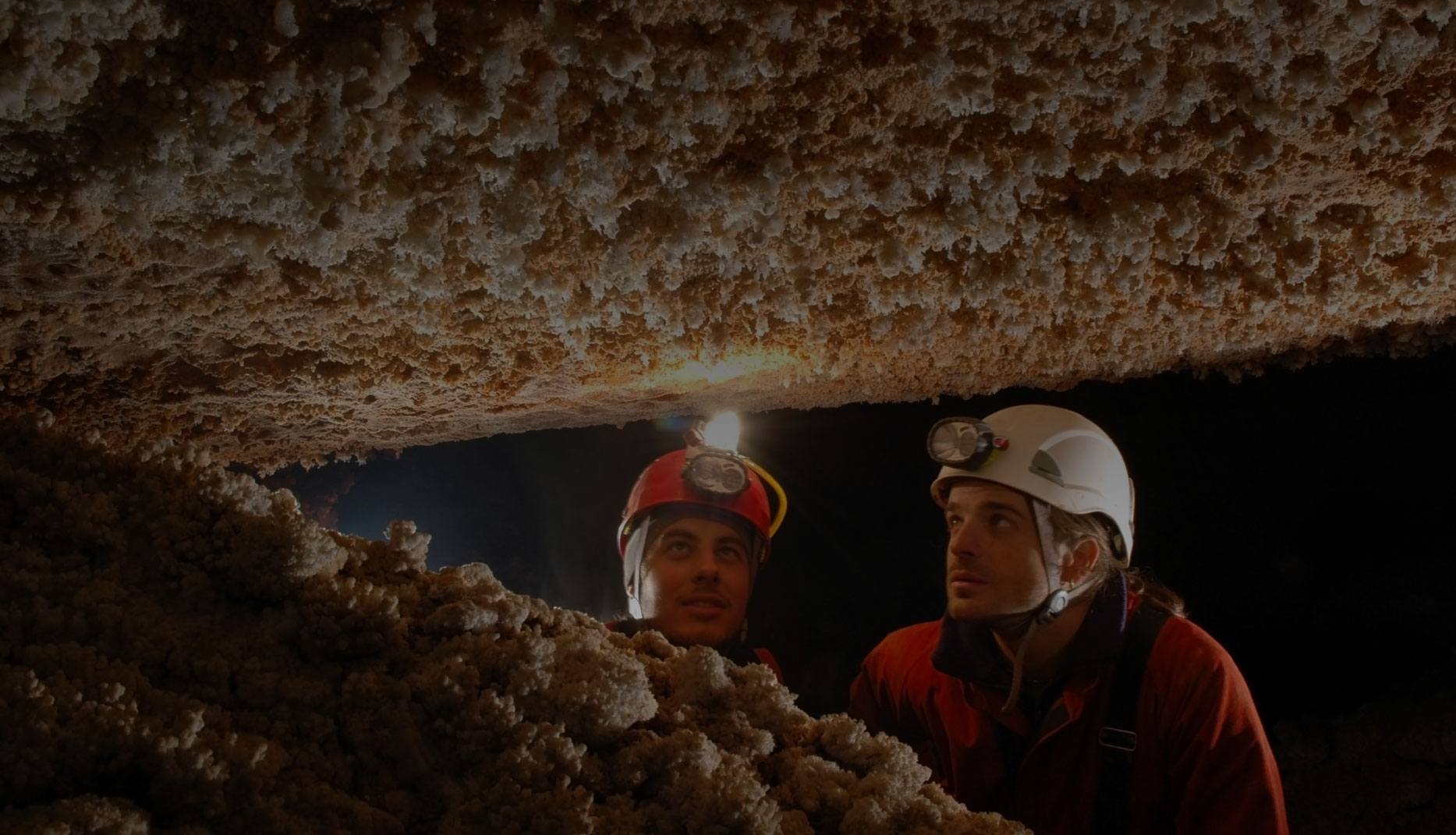One of the most well known gemstones in the trade is amethyst. It is the violet variety of quartz, and its name comes from the greek term amethystos. This can simply be translated to “not”-“intoxicated”, referring to an ancient belief that proclaimed this wine-colored stone could give someone back his or her sobriety and willpower, especially against temptation from the vices. Most people today value amethyst as a gem of popular culture, admiring it as the most in-demand purple or violet gem in the trade. Its value, although now mostly at commercial levels, was once close to that of ruby, sapphire or emerald. This was long before the discovery of near-abundant amethyst deposits in the rich grounds of several Brazilian provinces.
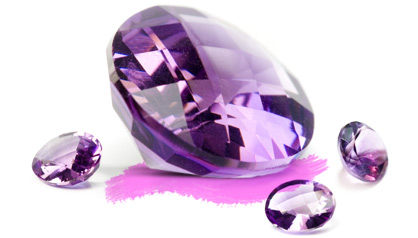
Amethyst as a Timeless Gemstone
Amethyst has been a part of multi-cultural heritage for many millennia. The ancient Egyptians once used these gems to carve out intaglio articles, such as the seal rings, tablets and artifacts. Many of which can now be found in museums all across the globe, serving as emblems of human history that showcase the presence of gemstones in our past exploits and traditions. The usage of amethyst in war was also observed during the medieval era, when soldiers would wear amethyst-clad amulets to protect them from harm, carrying crystals under the belief that it could calm strain, and promote focus in battle. Several notable raw specimens were saved as artifacts of value by other cultures. These large geodes and crystals are now housed along with fine collections for their natural beauty, rarity and formation.
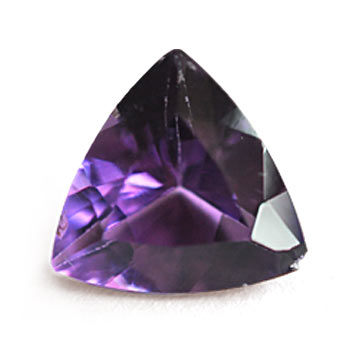
Bacchus & Amethyste
Remy Belleau’s famous greek story tells of Bacchus, the god of wine, pursuing a chaste maiden called Amethyste, who refused his affections.
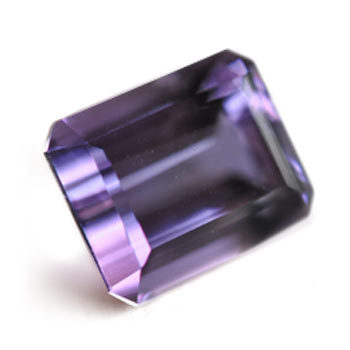
Violet Shades
Amethyst can cover a wide tone range in the violet hue sector. Some say that a mild component of red color can make a fine gem more valuable.
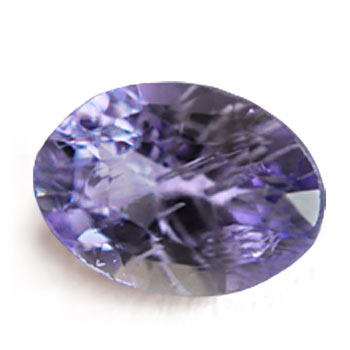
South Carolina
Amethyst quartz is considered to be the official state gemstone of South Carolina in the United States of America.

High Clarities
Amethyst can come in very clear transparencies at affordable prices. It’s often a matter of personal taste when buyers decide on a clarity level choice.
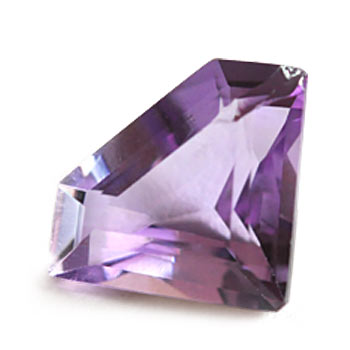
Sunlight & Intensity
Amethyst's deep purple color can often times fade when exposed to sunlight for a prolonged period of time, though a treatment process called irradiation can deepen its color once again.
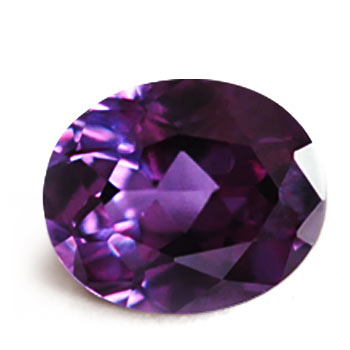
The Wine Color
Greeks would often tell myths and tales of how amethyst’s famous color was derived from the pouring of grape wine on crystal quartz.
"Amethyst is widely known for its violet color, but in reality it can actually come in shades as light as a mild pinkish purple to as deep as near-black violet. The two extremes of amethyst color can be attributed to a tiny percentage of iron, as well as the displacement of some transition elements in the atomic composition of a crystal. Many stones can lose their color to some degree if overexposed to strong light radiation, although this color can also be re-intensified using artificial irradiation. Some gems that are heated can turn yellowish and result in either the citrine or ametrine varieties of quartz."
This gemstone is widely used in jewelry throughout the entire market range due to its versatility, affordability and high clarity. Commercial quality amethyst may have more inclusions, but generally the variety itself tends to be more eye-clean than most other species of gemstone. Many middle-market amethysts will show nearly-flawless clarity when viewed with the naked eye. Any minor inclusions would usually require a 10x triplet loupe to observe and identify, although these can sometimes help in determining the origin and nature of a gem.
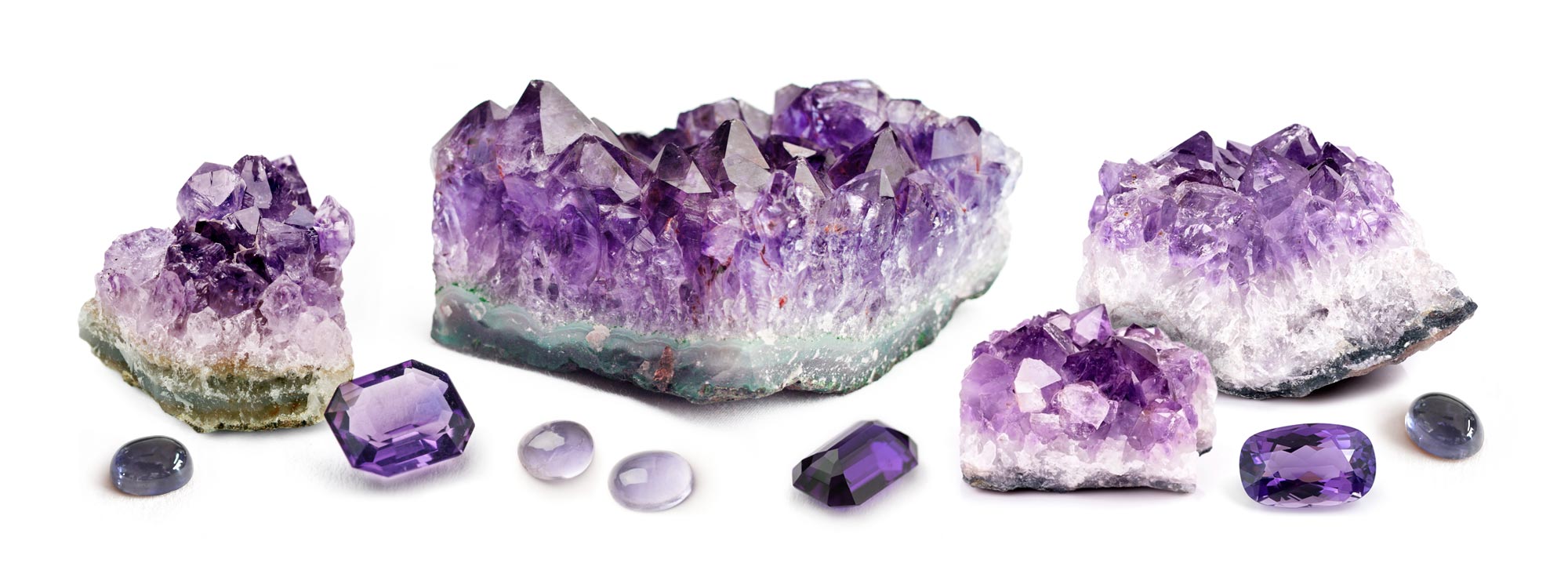
Amethyst was once among the world’s most expensive gemstones up until the eighteenth century. It used to have a value ranking that was nearly at par with some of the world’s most precious gem varieties, such as ruby or diamond. Today though, a majority of the amethyst gemstones in the trade are valued more commercially, due to one historical event that changed the course of this gemstone’s place in the eyes of the market.
When Brazilian miners uncovered the vast amounts of amethyst quartz in their country’s gem-bearing localities, a flooding of natural amethyst items occurred in the market on an international scale. This untimely event had both good and bad effects for the stone. It did significantly rise in popularity, due to the modern affordability that came from Brazil’s new deposits, however the high-value rates that it once possessed never truly returned to the trade. Only a select, hand-picked few are now eligible for high-market prices due to their exceptional qualities, even amongst the millions of carats being mined out of the ground every year. These days, most amethyst rough are cut into various calibrated sizes, mostly to be fit as side-stones on diamond jewelry pieces or as main stones on middle-market colored-stone jewelry. The prospects for amethyst as a cut gem, also extends to its usage in the designer jewelry markets. Many ‘named’ gem cutters have favored amethyst for decades, due to its incredibly high clarity and widespread availability. Clear gems are preferable for freeform gem sculptures because of their transparency and adaptability to uniquely contoured facets.
Stones can be sourced from several areas of Brazil, including the provinces of Minas Gerais, Bahia, Ceara, Mato Grosso and Rio Grande do Sul. The country’s neighboring nation of Uruguay also produces some top quality amethyst, rivaling some of the localities in the Brazilian mining pipeline. Producers generally believe that the more intensely colored stones with darker purples are of higher value, however gemstones with a reddish color component can fetch high-end prices due to their rarity and popularity among connoisseurs.
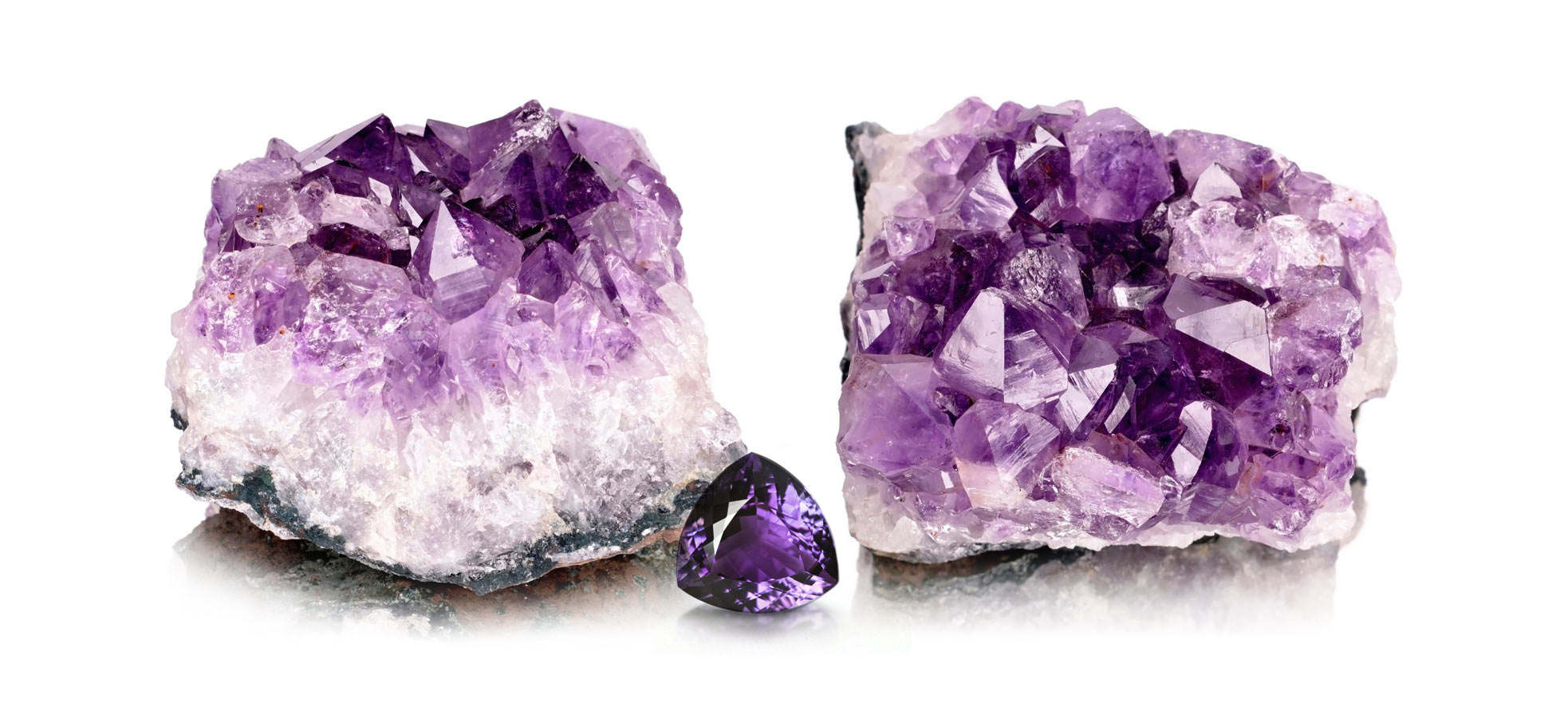
Many other places around the world can produce amethyst as well. Among them are Argentina, Russia, India, Sri Lanka, Zambia, Siberia, South Korea, Austria and the US. These countries have amethyst deposits that output less in quantity compared to Brazil, but a couple of them have been known to produce some of the world’s finest qualities of the gem. Trade terms like “deep-siberian” are famous phrases used by dealers in the industry, due to many source-oriented historical records of fine gems being found at certain localities. There exists a widespread international recognition for amethyst gemstones because of its now modern availability, but the balance of supply and demand have also taken a toll on its price-point across the past couple of centuries. Nevertheless, amethyst remains to be the most well known purple gem in the trade, followed by tanzanite, purple sapphire and iolite. Many appreciate the commercial availability of amethyst, as it adds the possibility of new hues for trending jewelry designs.
Caring for Jewelry Items and Evaluation of Gemstones
All quartz varieties in general are pretty durable, ranking a 7 on the moh’s hardness scale. Just do keep them away from contact with other gemstones (especially those with a higher hardness rating). Sometimes amethyst gems will fade in color if exposed to high intensities of light. The degree of change can differ from stone to stone, but its best to store them in a cool, dark and dry environment to avoid this. Do not worry too much though, amethyst color-fading is not instantaneous or too intense. Take proper care for your stones, and their qualities will last for generations to come. Procedural irradiation treatment can always re-intensify an amethyst’s color saturation as well.
Jewelry Repair
Heat from a jeweller’s repair torch can drastically change an amethyst’s color into a more yellow or brownish hue. Ask your jeweler for advice, and if applicable to put on the needed coating to protect any stone from excessive heat exposure. Always take into consideration the inclusions that may be present within your gem as well. Some of these may be prone to rupturing at high temperatures.
Frequently Asked Questions

Why are some amethysts heated?
Amethyst can be heated to produce another variety of quartz called citrine (considered a product of enhancement if done this way). Many stones can also be partially exposed to heat, in such a way that the procedure creates a bi-colored variety called ametrine. This allows for a higher diversity in the seller’s product range, so many opt to treat a portion of their supply stock for better overall salability.
What is green amethyst?
In the trade, some people sell the green variety of quartz using the term “prasiolite”, sometimes spelled as “praseolite”. This type of gem is often produced by heating certain colors of amethyst, in order to create a yellow-greenish hue. “Green amethyst” is another market label for this product, and although green quartz can (very rarely) be found in nature, buyers normally assume that those present in retail stores are treated gemstones.
How does amethyst compare with other varieties of quartz?
Although all quartz varieties are relatively affordable for most buyers, there is some hierarchy in the valuations between them. Many would consider the most expensive quartz to be either amethyst or the golden-rutilated variety. Both of these gemstones usually command the highest price-per-carat given equivalent quality states, however there will always be cases where an exceptional stone from a different variety can command a higher price point due to exceptional rarity.
What are other gemstones that are used as alternatives for amethyst?
Not many gemstones come in intense purple colors. For many, amethyst is the finest in terms of having intense purple-to-violet saturations, but some other stones can come close to achieving this trait as well. Purple sapphire can sometimes be mistaken for amethyst, likewise tanzanite can also come in beautiful shades of violet and purple. Both of these stones are sometimes sold for prices much higher than equivalently colored amethyst, but the their availability on the market is not always as consistent.
What constitutes the most expensive color of amethyst?
Currently, the connoisseur market prefers intensely colored stones with some possessing about 18-22% of red color as a modifying hue. Most of these make up the highest quality tier for amethyst, although some gems that possess a strong bluish modifying hue are also highly sought after.
What is the most important quality to consider when buying amethyst?
Like almost all colored gemstones, amethyst’s most important factor is usually its color grade. Some people will also prioritize high clarities, but many are already aware that clear transparent amethyst is widely available due to the variety’s nature. It’s probably best to consider color first, and then clarity and carat weight when buying amethyst gems on the open market. The factor of cut is not always as important, unless the stone is cut as a freeform or designer piece, in which case it’s usually priced at a higher premium for the art involved.
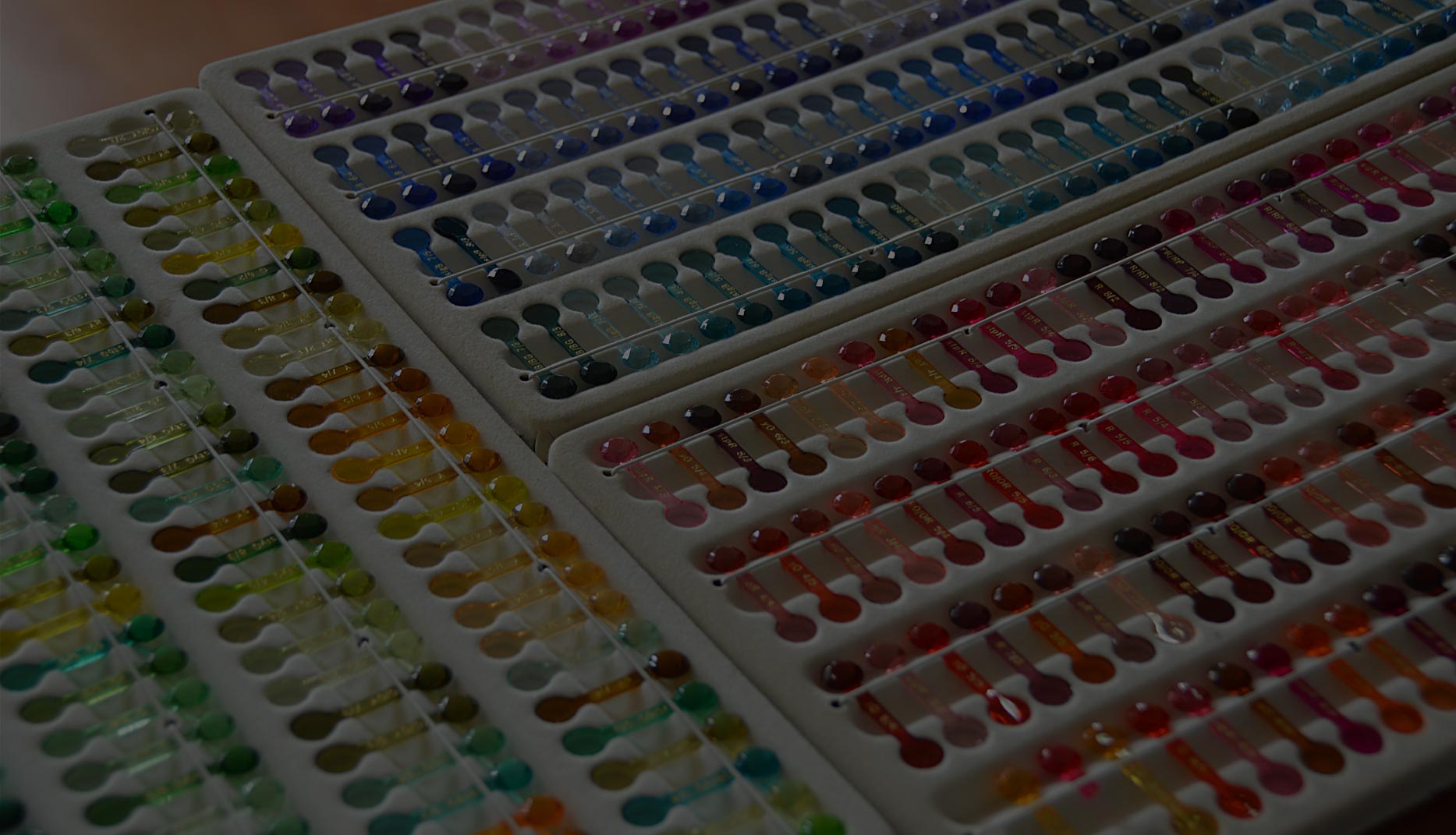
Amethyst Gemological Information
Gem Species:
Quartz
Composition:
SiO2
Violet to
Reddish Purple
Refractive Index:
1.544 to 1.553
Specific Gravity:
2.66
Hardness:
7 (Mohs)
Gemologist's Lab Notes
The Scientific Identification of Amethyst
Amethyst belongs to the quartz species, which is one of the most abundant mineral species on the planet. Despite this, gem-quality quartz is much more rare in comparison, and the crystallization of amethyst requires additional conditions to be present in the environment as well. The known chemical composition for quartz is SiO2, which means that it’s composed essentially of silicon and oxygen atoms. The trace presence of iron can contribute to the coloration of the amethyst variety, as could the effect of irradiation, whether natural or artificial.
Amethyst gemstones have several easy-to-spot traits for gemological identification. Many folks’ first simulant-related question is normally whether a purple stone is truly amethyst or man-made glass. Well, a quick look under the polariscope with a conosphere should help clear that up in no time. Most of the time, observers will be able to see a visual patten called the “bull’s eye” optic figure, which basically looks like a circle in the middle of a black cross. Sometimes you might have to move the stone around to find it, but this pattern will help distinguish quartz from glass imitations. Other than this separation technique, one could also try checking for amethyst’s RI with the refractometer. This normally goes from about 1.544 to 1.553, allowing the viewer to also check for birefringence, and whether or not the stone in question is in fact doubly refractive (as amethyst is). Still though, it’s always best to gather the results from several tests before giving your final verdict on a certain stone. You might also want to check for things like pleochroism using the dichroscope, or for an exact specific gravity (2.65) using a hydrostatic weighing scale. These results can help your separation work move much faster as they can support the identification of amethyst in coherence with the previous tests mentioned.
What is Synthetic Amethyst?
Synthetic or man-made amethyst is essentially quartz that is grown in a laboratory by artificial means. This product is also exposed to irradiation via electron beam, gamma or x-ray sources to induce a purple to violet color in the crystal. Most synthetic quartz are created by using the hydrothermal synthesis process, although this can be relatively costly and time-consuming compared to the other techniques used to create different gems. Some usual evidences of hydrothermal creation are the presence of a “seed plate”, directional “nail-head” spicules, or tiny “breadcrumb-like” inclusions. You might want to submit the stone to a lab for further testing, however given the commercial value of amethyst, it is not always cost efficient to do so, unless you’re dealing with a very rare, high-end example. Most vendors prefer to deal with natural amethyst rather than synthetics because of its flexible affordability.
Heating Amethyst to Produce Citrine?
A lot of the citrine on today’s market came from procedures that involved applying heat to amethyst crystals. Many might say that naturally occurring citrine is more rare, and yet less beautiful than this treated product, and so a majority of the retail stores that do offer citrine jewelry now choose this treated gemstone as their primary type of yellow gem. Whether it should be called treated amethyst or citrine is up to personal choice, however from what we have seen, most people do not have any issues with labeling these products as citrine quartz. About 90% or more of the trade’s citrine goods are now being sourced from this method, due to a combination of supply concerns and trade demand. Most collectors of naturally occurring citrine choose to pay a premium for their own preference of origin.

Zebra Stripes
One characteristic type of inclusion observed in many amethyst crystals is often called “zebra stripes” or “soap scum”. This may not be a very flattering name, but the distinct growth-related pattern of these inclusions can often aid gemologists as supportive evidence to be used along with other test results. Amethyst and heat-related citrine can both have inclusions that showcase this visual pattern.

Brazilian Twinning
Almost all natural amethyst crystals are twinned according to the ‘brazil law’, and this can be seen under crossed polarizing filters as a geometrical pattern of parallel lines that relate themselves with the growth habit of the original crystal. This observance can be supportive in separating natural amethyst from synthetic counterparts due to the fact that most synthetic quartz are grown as single untwined crystals.

Color Zoning
Amethyst tends to possess some amount of color-zoning that usually follows the growth habit of its original crystal. Normally these can be observed as straight or angular bands alternating some darker and lighter colors. Cutters tend to use the darkest parts of a color-zoned amethyst crystal so that their end-product will have a much more saturated color grade.
Qualities, Value and Demand
Amethyst price ratings depend on color, clarity, carat weight and cut, although the majority of amethyst gemstones are often priced at commercial levels. Some rare stones, often termed ‘Russian or Siberian Deep’ by the trade, exhibit red flashes of modifying color and can garner much higher price points. There are also those buyers who would pay a premium for artistic ‘freeform’ contoured stones.

Of all the violet gemstones, none can compare in popularity with amethyst. It’s notably the most well known variety of quartz, and possibly one of the most widely recognized gemstones in human history. Several centuries ago, the world valued fine amethyst alongside rubies, sapphires and emeralds as one of the most expensive and sought-after treasures of the earth. It was often included as a centerpiece set in ancient jewelry artifacts, sometimes due to the fact that several cultures believed it to possess a supernatural influence on health and well-being. The written literary works of Pliny told of the stone’s power to protect against the venomous effect of snakebites. Many of the reported “miracles” related to amethyst seem to revolve around a cleansing or purifying effect. The followers of crystal therapy promote amethyst as a rejuvenating medium. One that can administer a sobering effect to anyone who wears it firmly against their skin. Such sayings and beliefs, though old and often apart from modern sciences, have provided a cornerstone for the millennium-long demand that many generations of the jewelry trade have experienced with amethyst. The wholesale trade today is quite active in its activities, sourcing and cutting raw crystals from Brazil and many other countries around the world. The pristine colors of amethyst still remain as some of the most beloved hues coveted in the trade today.

In the photograph above, we can see a raw section cut away from a very large geode, showing amethyst and rock crystal quartz as the inner layers. Beyond that, we can observe areas of chalcedony or agate before reaching the outermost rocky exterior. Many varieties of quartz can be found within geodes. The conditions for their formation are ideal for the growth of an encapsulated forest of crystal prisms that radiate inward, sometimes surrounding a hollow cavern or space.
Aside from amethyst in its pure form, one other popular variety of quartz is the bi-colored Ametrine. This gemstone is unique, in that its color is often a combination between the violet hue of amethyst and the golden hue of citrine. Bolivia’s famous production of fine Ametrine has charmed the world into creating a relatively recent demand trend for the stone. Today though, many raw amethyst crystals are partially heated so that half of their length turns yellowish like citrine. Ametrine produced through this simple method has been able to supply the general trade’s demand for bi-colored gemstones (along with parti-colored tourmaline). It’s often unclear how much a gem variety will appreciate in the coming years or decades. Amethyst’s ups and downs have been mostly attributed to its relationship with newer sources, and while we cannot always determine when and where another novelty mine will be discovered, modern scientific practices can now predict the lifespan of many currently active deposits.
Synthetics, Imitations and Treatments
Creating man-made amethyst is doable through the hydrothermal growth method, similar to the processes by which synthetic quartz and synthetic beryl are made. Despite this fact, we do not see a large supply of artificially created amethyst on today’s market. This observation is inherently due to the current affordability and availability of natural amethyst. Most of the buyer population would not want to deal with synthetic counterparts if there is already a steady and dependable supply of economically viable earth-mined gems. The price of scientific detection though (using gemological lab certification) has been said to outweigh the general price of most natural specimens.
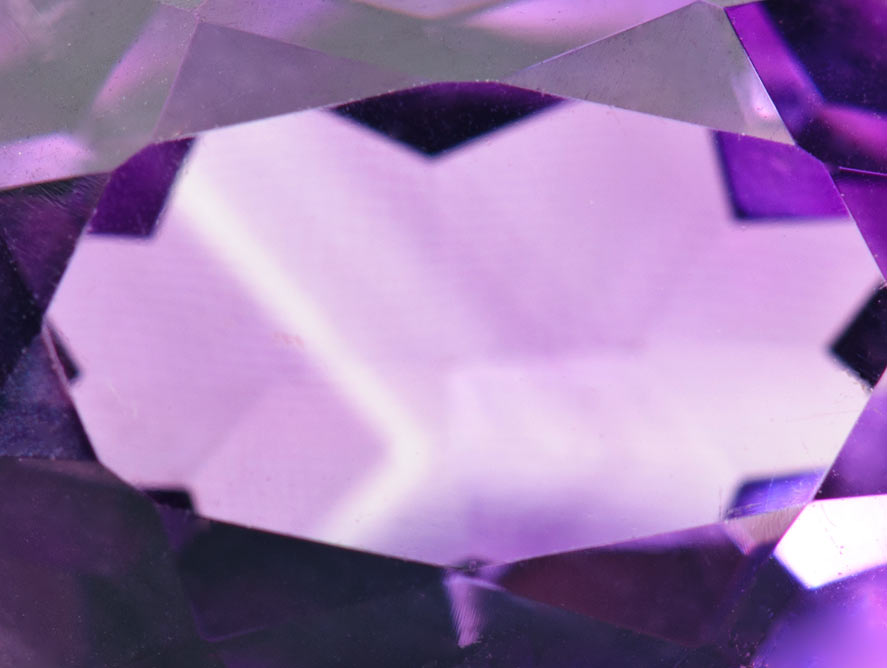
Trait | Color Zoning
Angular color-zoning visible in this faceted amethyst gemstoneRegions of color-zoning are commonly seen in both rough and faceted amethyst specimens. They are often angular and can be prominenty visible even to the naked eye.
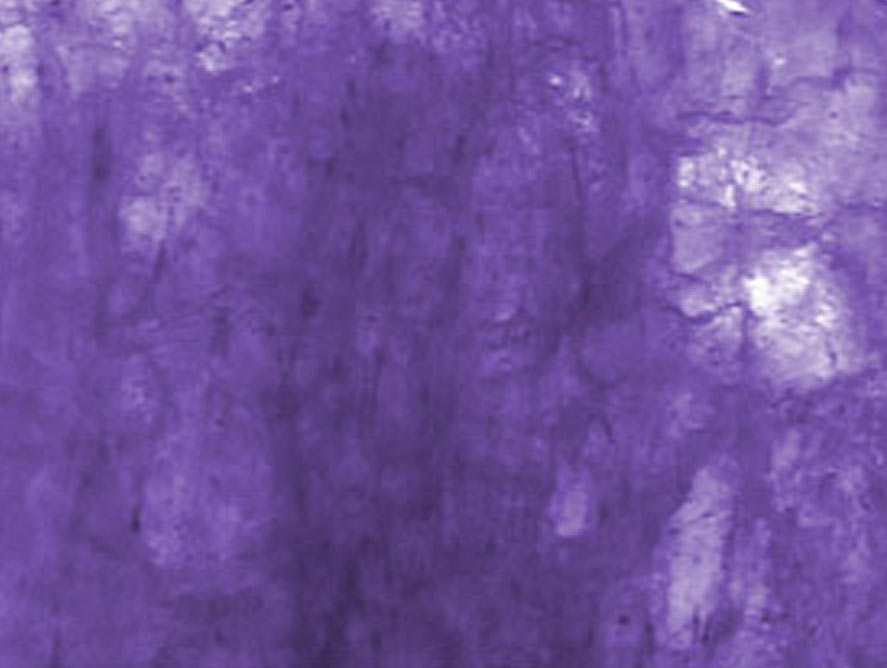
Treatment | Color Dye
Concentrations of purple colored dye along internal fracturesMany colorless materials such as quartzite, can be dyed purple to imitate amethyst. This is often done for beads or heavily included carvings, because the presence of internal fractures is conducive for the treatment's outcome.

Imitation | Assembled Doublet
Luster differences reveal where this assembled doublet imitation had been fusedAn assembled doublet consists of two materials fused together in order to imitate a gemstone. You may often see a stark luster difference between the two materials at the region where they had been fused or glued.

Alternative | Charoite
Naturally occurring purple charoite can sometimes be mistaken for cloudy amethystAlthough not commonly used for the purpose of imitating amethyst, the mineral known as charoite can sometimes be confused with it. The purple colors of charoite are natural, but some people mistakenly identify it as a dyed material because of its swirl-like textures.
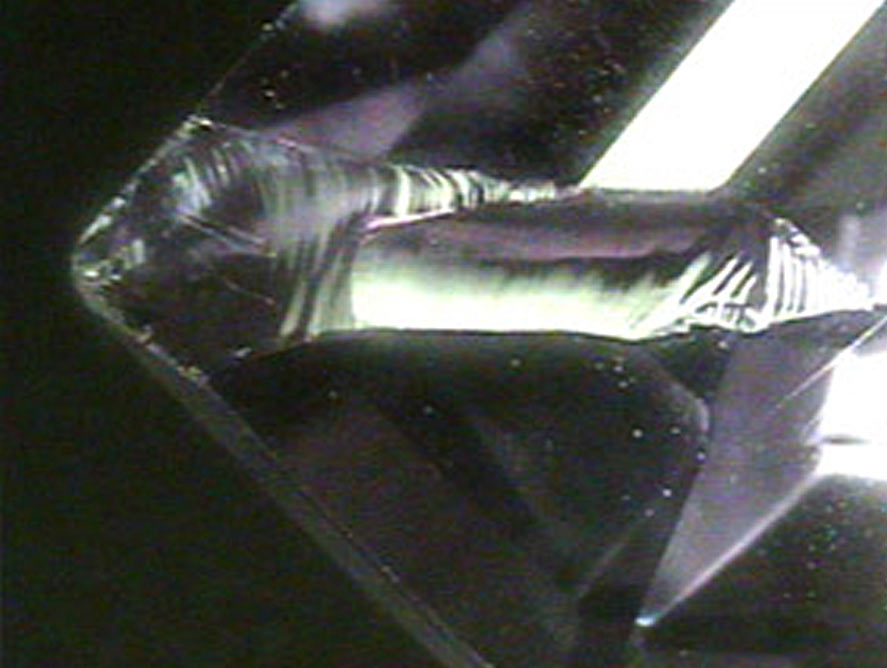
Trait | Conchoidal Fracture
A long conchoidal fracture on the surface of a faceted amethystAll varieties of single-crystal quartz including amethyst and ametrine, typically show fractures that are conchoidal, curved or scalloped in visual appearance.

Treatment | Heating
Close-up of an ametrine gemstone produced through heat treatmentAmethyst can be fully or partially heated to produce either citrine or ametrine respectively. It is no longer commonly disclosed on commercial markets as to whether or not a citrine gem had been produced via this treatment process.
Contact Us
Get in touch with a Gemologist.
For gemological assessment requests, our laboratory evaluates gemstones as an impartial third-party assessor.
